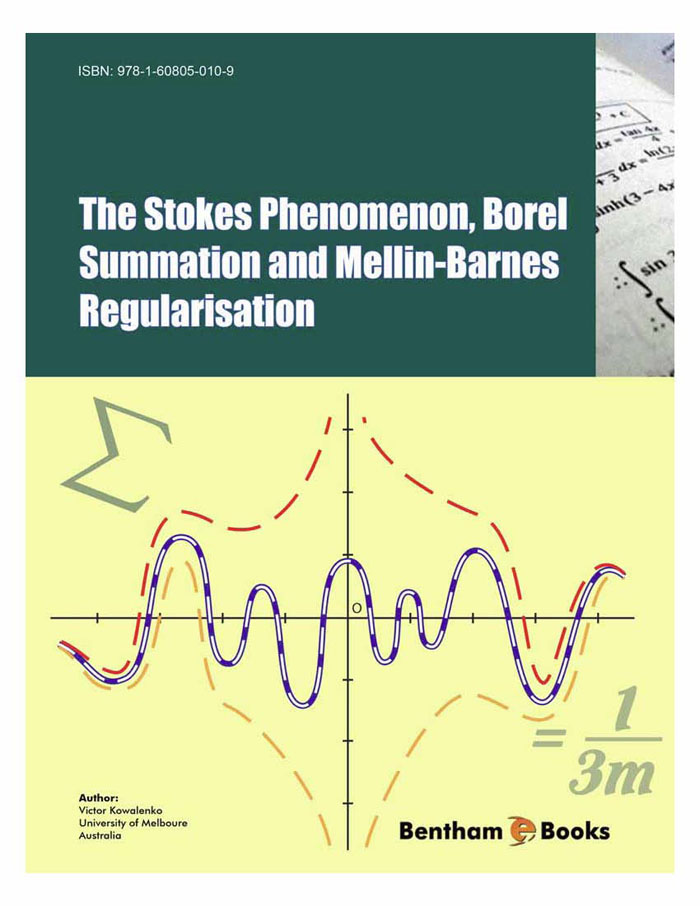Hyperasymptotics, known also as beyond-all-orders asymptotics and exponential asymptotics, has become important in the last couple of decades, but asymptotic/ divergent series have been useful and confusing for centuries. Niels Henrik Abel, who died one hundred and eighty years ago, wrote: “Divergent series are the invention of the devil, and it is a shame to base on them any demonstration whatsoever. By using them, one may draw any conclusion one pleases and that is why these series have produced so many fallacies and so many paradoxes ...”. Hyperasymptotics has been the struggle to remove these fallacies and paradoxes.
Sir George Stokes made a major advance in 1857 when he discovered the Stokes phenomenon [2]; the form of the asymptotic approximation must change discontinuously crossing certain sectors in the complex plane. In his own words, “the inferior term enters as it were into a mist, is hidden for a little from view, and comes out with its coefficient changed.” Stokes’ discontinuities have been successfully embedded into the special function software that evaluates Bessel functions, the exponential integral and many other transcendental functions in Matlab, Mathematica and FORTRAN. Thus, his coefficients from the “mist” have been reduced to black boxes, robust and invisible to the user. Yet Stokes himself was never entirely pleased with his “discontinuities”. In a droll letter to his fiancee, he says that he stayed awake until 3 am, peering over his notes with only the feeble, guttering light of a candle, trying to understand them.
Robert Dingle offered an improved treatment in his 1973 book [3]. His student, Sir Michael Berry, wrote about “smoothing a Victorian discontinuity” in 1989 [9], and introduced “superasymptotic” and “hyperasymptotic” into the lexicon [47]. In this book, Victor Kowalenko boldly takes on these sages with his own interpretation of the Stokes phenomenon.
Who is right? We shall let the reader judge, but offer only two observations that are on sure ground. One is that, like Abel and Stokes, contemporary mathematicians are still struggling to interpret and conceptualize hyperasymptotics. In Enrico Fermi’s words, “we are still confused, but at a higher level”.
The second is that the reader may use the approximations and algorithms of Kowalenko’s book without fear. One of his book’s strengths is that it is full of very careful, high precision numerical experiments (as are the papers of many of his adversaries like Berry). There are no controversies about numerical accuracy; the conflicts are about concepts, interpretation and the best strategies for extending hyperasymptotics to new realms where it has not yet been verified.
Kowalenko’s book is thus an important step forward in a quest that has stretched over centuries and is still an active research frontier. His study captures only part of a very broad mathematical toolbox important in quantum mechanics, fluid mechanics, optics, quantum field theory and a dozen other fields. Refs. [27] and [48] give a perspective on this breadth, while Ref. [49] catalogues other books on hyperasymptotics.
Still, Kowalenko’s book covers an important subset of this broad field. In particular, it reaches across the centuries to shed deeper light on the Stokes phenomenon and the Dingle-Berry theories. Borel summation, too, is more than a hundred years old, but Kowalenko shows that it is a powerful tool for regularizing divergent asymptotic series. The vagueness of the Landau gauge symbols, O() and o(), which express only order-of-magnitude and limits, can be replaced, at least for the cases he analyzes, with precision. This book is a good addition to an ancient, but also modern, research frontier.
John P. Boyd
Ann Arbor, Michigan
USA

